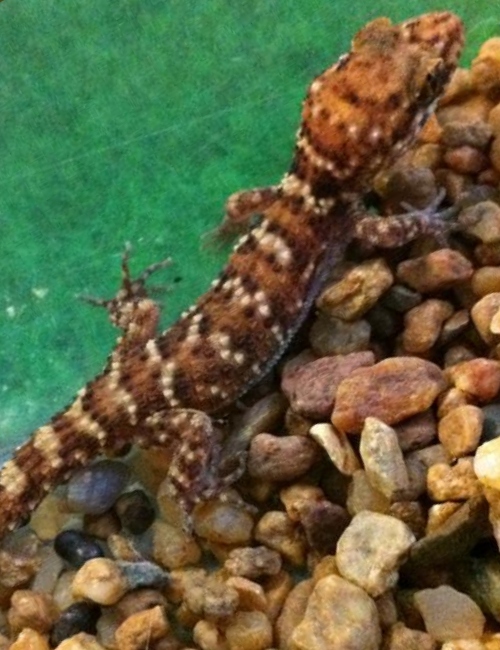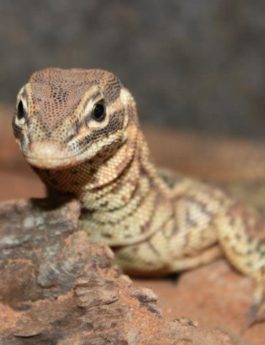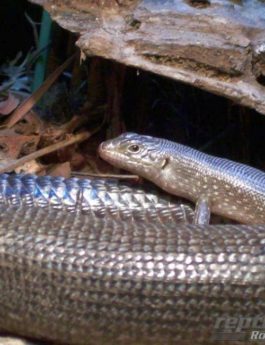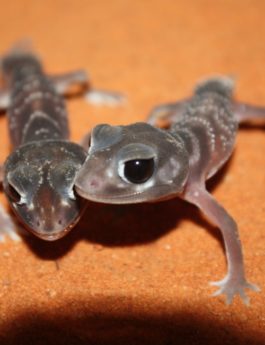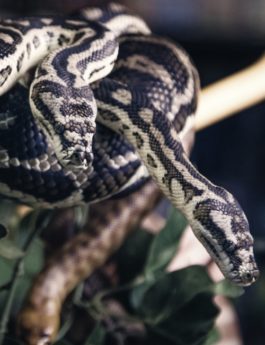Three described small, long-tailed sub species with small granular scales mixed with many scattered to longitudinally aligned enlarged tubercles, and angular, bird-like clawed feet — claws arising from 3 scales, 1 above and 2 below (fig. 1) lacking expanded lamellae. Swift and active terrestrial geckos. Heteronotia binoei: SVL 54 mm Slender and long tailed, with dorsal tubercles scattered or arranged in irregular longitudinal rows. Pale greyish brown or reddish brown to almost black, with scattered to transversely aligned darker and paler spots, often arranged to form many narrow irregular bands.
N o t e : Some populations are parthenogenetic (Able to reproduce without fertilization by a male, particularly some geckos that produce female clones), while others comprise normal male and female individuals.
Shelters beneath rocks, logs, loose bark at bases of stumps, dead vegetation, in soil cracks and beneath surface debris. Locally abundant in many areas with almost all available cover harboring resident geckos. Widespread through virtually all subhumid to arid habitats, extending into some highland areas of Great Dividing Range and outliers. Absent from alpine areas, rainforests, and extreme south and east of continent.
Terrarium: Bynoe’s geckos are a small ground dwelling gecko, therefore they do not need an enclosure with much height. A terrarium measuring 45x45x30 (WxDxH) is enough room to comfortably house a trio.
Lighting & heating: UVB lighting is not essential to Bynoe’s Geckos, however a low 2.0 spectrum fluorescent globe can be used for viewing purposes and may benefit breeding females as they lay a hard-shelled egg. Heating can be provided with a heat rock, tile, mat or cord to maintain a ground surface temperature of 32°C in the hot spot. Ambient heat can be provided with an infrared heat globe to maintain a daytime temperature of 30°C in the warm end and 20°C in the cool end, on warmer days you may not need to turn on the heat globe as the ambient temperature of the enclosure may already be high enough.
Furnishings: Naturally Bynoe’s Geckos shelter under rocks and loose bark, so providing an enclosure with plenty of hide caves in both the hot and cool end is important. Substrate should be red sand kept at the correct moister with some large pieces of loose bark to provide natural hiding spots. A water bowl will need to be positioned in the cool end of the enclosure.
Food in captivity: Bynoe’s Geckos are insectivores, feeding on appropriate sized crickets and woodies. Food items will need to be dusted with calcium and vitamin supplements.
The essentials:
- Terrarium of appropriate size
- Ground heating
- Thermometer
- Water bowl
- Substrate
- Hide caves
- Foliage for shelter
- Calcium and vitamin supplements

